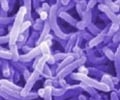A new high-resolution atlas that shows where underground aquifers store vast amounts of water, may help to provide a legal framework for nations to manage water resources, averting
A new high-resolution atlas that shows where underground aquifers store vast amounts of water, may help to provide a legal framework for nations to manage water resources, averting conflicts in the future.
According to a report in New Scientist, the map is the result of nearly a decade of sometimes difficult talks between neighboring governments, mediated by UNESCO.The hope is that it will help pave the way to an international law to govern how water is shared around the world.
Aquifers are underground layers of rocks or sediments from which water can be extracted - normally by drilling boreholes or digging wells.
They hold 100 times the volume of freshwater that flows down rivers and streams around the world at any time.
What the UNESCO map reveals is just how many aquifers cross international borders.
So far, the organisation has identified 273 trans-boundary aquifers: 68 in the Americas, 38 in Africa, 155 in Eastern and Western Europe and 12 in Asia.
Advertisement
"This (map) is a fantastic resource which a lot of us have been waiting for," said Mark Zeitoun, a water policy expert at the London School of Economics.
Advertisement
The UNESCO map helps define the geographical extent of an aquifer, which could be useful in defining international agreements.
The map could also help countries better manage their water.
According to Richard Taylor, a hydrogeologist at the University College of London in the UK, neighboring governments will be able to share technologies and strategies for exploiting a shared water resource without sucking it dry.
Zeitoun, who advises Palestine in its water-sharing negotiations with Israel, is one of many would like to see these variables formalised in an international legal framework for water management.
"There is an urgent need for an international law on water sharing," he said.
UNESCO is expected to make public a more detailed map of trans-boundary aquifers in spring of 2009.
Source-ANI
SPH









